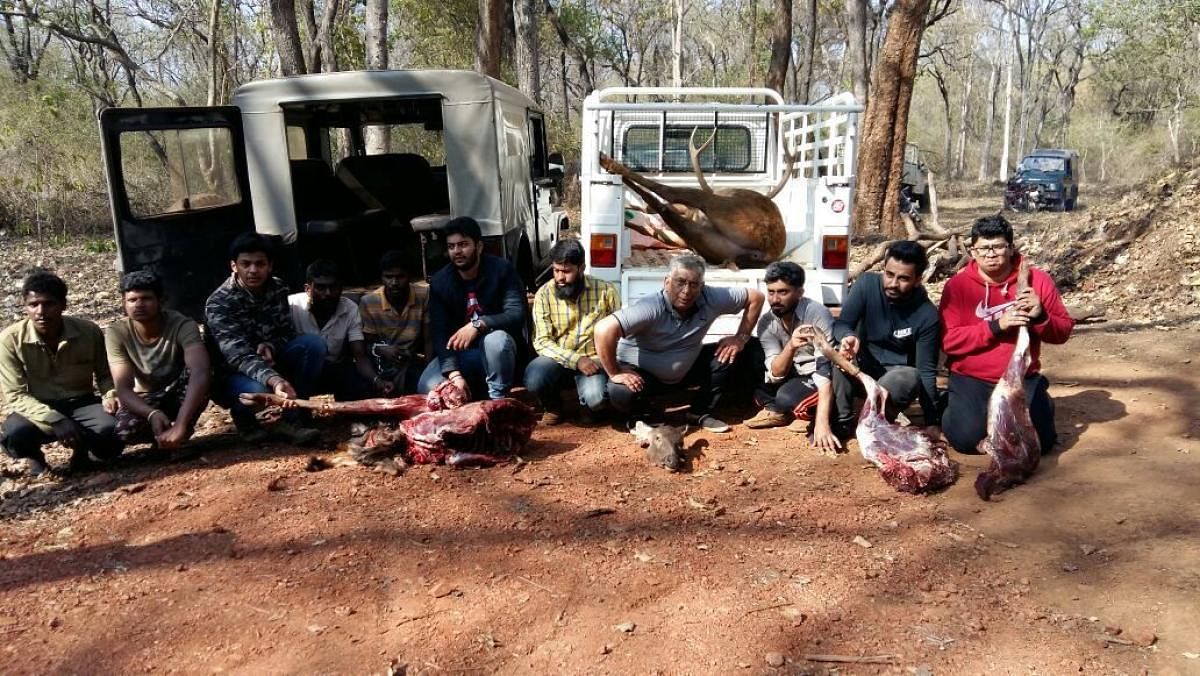
The biodiversity-rich forest regions of Karnataka are home to some of the unique and endangered flora and fauna. Perhaps being the only state in peninsular India with about 25 per cent of Asiatic elephants, 20 per cent of tigers and over 15 per cent of leopards, Karnataka is undoubtedly the one-stop destination for wildlife tourism. However, the state with its thriving wildlife population is also figured prominently on the wildlife traffickers’ network. The vigilant personnel of Karnataka Forest Department (KFD) and Karnataka Police Forest Cell along with many wildlife organisations are tirelessly working to safeguard the precious species.
Sources in the forest department and forest cell of Karnataka revealed to DH that the state since long back has always been a major collection and trading centre for wildlife parts and a congregation hub for wildlife traffickers from Eastern, Central and Western India.
The considerable increase in the wildlife population of various species owing to effective conservation by KFD has always attracted the attention of poachers and wildlife traders. While these poaching and trafficking activities rose to an all-time high during the period of forest brigand Veerappan, the activities were stealthily carried out in minimum numbers by small-time poachers and operators.
According to KSN Chikkerur, additional director general of police (Rtd) who previously served as IG, Karnataka Forest Cell, the first-ever breakthrough in busting the wildlife trade in South India was when the state police arrested Prabhakar Gajkosh in Hubballi and Abdul Khader Chaudhury in Telangana who were suspected to be the kingpins of poaching and wildlife trade in entire South India.
The duo, according to the police, had their own network and operators which involved members of the nomadic tribal communities from Rajasthan and Madhya Pradesh besides Karnataka. The sleuths, who had assumed poaching to be a handiwork of local people, were in shock when Rajasthan police nabbed Rani Sansar Chand, the wife of notorious wildlife trafficker Sansar Chand and one of her accomplices EP Singh hailed from a tribal community in Hassan.
Chand, who had reportedly created terror in Sariska Tiger Reserve with his notoriety, was also seen operational in Karnataka through some of the locals. Wildlife trade which was largely centred around elephants and small mammals gradually shifted its focus on tigers, leopards that were multiplying salubriously in the state’s forests. In fact, when forest cell sleuths raided the room of Gajakosh, officials were stunned as leopard and tiger pelts were stacked like newspapers. “We recovered about 25 leopard pelts and 40 otters’ pelts which were all killed in Karnataka and the neighbouring Tamil Nadu,” an official of the forest cell revealed.
Transit hub
Yet another retired forest official who previously served as the chief wildlife warden said, “Alongside the thriving population, the geographical position of Karnataka also makes it convenient for traffickers. The state has well-connected transportation mode with Chennai and Mumbai from where much of the illegal consignment is shipped out of India.” Adding to it the large scale tanneries, according to officials, at Dindigul and Coimbatore close to the state border also served their purpose until a few years ago.
“Overnight, the killed animals would be taken to these places and skinned. With strong regulation, now poachers resort to the skinning of animals within the forest areas,” a retired RFO from Nagarahole revealed.
The Forest Cell which between 2008 and 2011 seized wildlife products worth Rs 5 to 8 crore every year. “What had started in the form of pelts, gradually narrowed down to body parts of various animals. Bones of tigers and leopards were trafficked by concealing them with other products so that it becomes difficult for the police to nab. In all these cases, the end destination was China and some of the Southeast Asian countries where these parts were used as medicine and artefacts,” a wildlife volunteer from Cauvery Wildlife Sanctuary revealed. In fact, the triangular area between Handpost (HD Kote), Narihalla and Kutta hit headlines between 2001 and 2004 when the state lost as many as 12 elephants.
Commenting on these traffickers modus operandi, Chikkerur said, “They generally identify shooters at the local level staying in the periphery of forests. They would be paid anywhere between Rs 1,000 to Rs 5,000 to track and shoot animals. A middle-man from Ooty, Kerala or Mysuru would then take away the required parts and ship them.”
Chosen destination
Bengaluru has also been the most chosen destination for traffickers to carry out transactions of pelts, tusks and some of the live animals. Forest officials were in surprise when a gang of poachers from Kerala struck near Mavinahalla to feast on bison (Gaur) meat.
While illegal trade of these large mammals has been happening between states, within the state, there are instances of illegal trading of wildlife parts. The skins of deer and blackbuck that were killed in Haveri and Kalaburagi were recovered in coastal areas where they were used by several religious leaders. Large-scale raids on highway dhabas in Chikkaballapur district a few years ago revealed rampant poaching of monitor lizards for their meat. The slender loris which is commonly sighted in Bengaluru Urban, Bengaluru Rural and Ramanagar areas have also become the targets of traffickers who extract their eyes and crush them to make fine powder to be used as a drug, according to officials.
Even though the raids and crackdown have been continuous by KFD officials and Forest Cell sleuths, the conviction of these miscreants has been a challenging task. “Lack of exposure to investigation skills and forensic methodology has led to the acquittal of many poachers and traffickers. Sensitisation camps are held for foresters and those associated with wildlife management and it has begun to yield better results in recent times,” a retired principal chief conservator of forests revealed.
